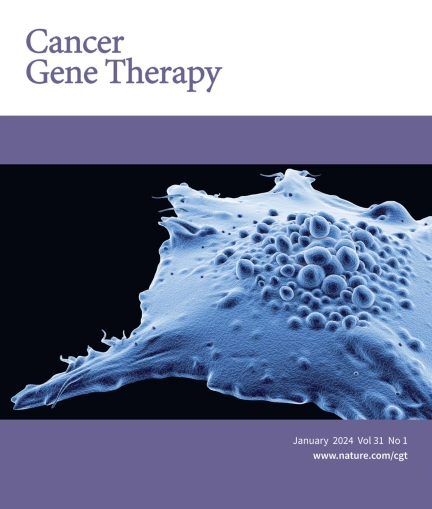Suppression of FOXO1 activity by SIRT1-mediated deacetylation weakening the intratumoral androgen autocrine function in glioblastoma
IF 5
3区 医学
Q1 BIOTECHNOLOGY & APPLIED MICROBIOLOGY
引用次数: 0
Abstract
Elevated levels of androgens in the brain accelerate tumor progression in patients with glioblastoma (GBM). Despite current research efforts concentrating on decreasing peripheral androgens to improve GBM prognosis, results have not met expectations. Herein, we aim to elucidate the source of increased androgen levels in the brains of GBM patients and investigate whether lowering it can improve the prognosis of GBM patients. The Elisa was employed to measure androgen levels. The effects of androgens on U87 cells were evaluated using CCK-8 assays, clone formation assays, wound healing assays, and migration/invasion assays. RNA sequencing, RT-qPCR and Western blotting were performed to assess the expression levels of steroid enzymes, tumor drug resistance, Sirt1, FOXO1genes and proteins. Co-immunoprecipitation (Co-IP) assays were conducted to investigate the interactions and acetylation levels between Sirt1 and FOXO1. Lentiviral transfection was utilized to establish stable cell lines. Furthermore, an in vivo murine subcutaneous tumor model was established to further confirm the role of Sirt1 in tumor progression. We found androgen levels in the cerebrospinal fluid of GBM patients were higher than in the periphery, contrasting with healthy individuals. Additionally, the steroid enzymes in GBM cells were upregulated. Reducing peripheral androgens compensatorily enhances GBM androgen synthesis capacity (CYP17A1, CYP11A1, SRD5A2) and chemo-resistance (ABCB11, BIRC3, FGF2, NRG1), while the levels of androgens in the brain remain consistently high. The above results indicate that the increased androgens in the brain of GBM patients are self-secreted. Further investigations demonstrate that the transcription factor FOXO1 in GBM is regulated by silent information regulator 1 (Sirt1) through deacetylation, leading to enhanced androgen synthesis capacity in vivo and in vitro. Overexpressing Sirt1 significantly lowers brain androgen levels and delays tumor progression in mouse models. Compared to conventional finasteran therapy, the targeted-Sirt1 results in lower brain androgen levels and smaller tumor volumes. Our findings provide evidence that the elevated androgens in the brain of GBM patients came from tumor autocrine. Overexpression of Sirt1 reduces FOXO1 acetylation, lowers androgen synthesis enzyme levels, and effectively decreases brain androgen levels, thereby delaying tumor progression.

通过sirt1介导的去乙酰化抑制fox01活性削弱胶质母细胞瘤内雄激素自分泌功能。
脑内雄激素水平升高会加速胶质母细胞瘤(GBM)患者的肿瘤进展。尽管目前的研究集中在减少外周雄激素以改善GBM预后,但结果并未达到预期。本文旨在阐明GBM患者脑内雄激素水平升高的来源,并探讨降低雄激素水平是否能改善GBM患者的预后。采用Elisa法测定雄激素水平。通过CCK-8实验、克隆形成实验、伤口愈合实验和迁移/侵袭实验来评估雄激素对U87细胞的影响。采用RNA测序、RT-qPCR和Western blotting检测类固醇酶、肿瘤耐药、Sirt1、foxo1基因及蛋白的表达水平。采用共免疫沉淀法(Co-IP)研究Sirt1和fox01之间的相互作用和乙酰化水平。采用慢病毒转染法建立稳定的细胞系。进一步建立小鼠体内皮下肿瘤模型,进一步证实Sirt1在肿瘤进展中的作用。我们发现,与健康个体相比,GBM患者脑脊液中的雄激素水平高于周围。此外,GBM细胞中的类固醇酶表达上调。减少外周雄激素代偿性地增强GBM雄激素合成能力(CYP17A1, CYP11A1, SRD5A2)和化疗耐药性(ABCB11, BIRC3, FGF2, NRG1),而大脑中的雄激素水平始终保持高水平。以上结果表明,GBM患者脑内雄激素的增加是自分泌的。进一步研究表明,GBM中的转录因子FOXO1受沉默信息调节因子1 (silent information regulator 1, Sirt1)通过去乙酰化调控,从而增强体内和体外雄激素合成能力。在小鼠模型中,过表达Sirt1显著降低脑雄激素水平并延缓肿瘤进展。与传统的非那雄酮治疗相比,靶向sirt1导致较低的脑雄激素水平和较小的肿瘤体积。我们的研究结果提供了证据,表明GBM患者大脑中雄激素的升高来自肿瘤自分泌。Sirt1过表达降低FOXO1乙酰化,降低雄激素合成酶水平,有效降低脑雄激素水平,从而延缓肿瘤进展。
本文章由计算机程序翻译,如有差异,请以英文原文为准。
求助全文
约1分钟内获得全文
求助全文
来源期刊

Cancer gene therapy
医学-生物工程与应用微生物
CiteScore
10.20
自引率
0.00%
发文量
150
审稿时长
4-8 weeks
期刊介绍:
Cancer Gene Therapy is the essential gene and cellular therapy resource for cancer researchers and clinicians, keeping readers up to date with the latest developments in gene and cellular therapies for cancer. The journal publishes original laboratory and clinical research papers, case reports and review articles. Publication topics include RNAi approaches, drug resistance, hematopoietic progenitor cell gene transfer, cancer stem cells, cellular therapies, homologous recombination, ribozyme technology, antisense technology, tumor immunotherapy and tumor suppressors, translational research, cancer therapy, gene delivery systems (viral and non-viral), anti-gene therapy (antisense, siRNA & ribozymes), apoptosis; mechanisms and therapies, vaccine development, immunology and immunotherapy, DNA synthesis and repair.
Cancer Gene Therapy publishes the results of laboratory investigations, preclinical studies, and clinical trials in the field of gene transfer/gene therapy and cellular therapies as applied to cancer research. Types of articles published include original research articles; case reports; brief communications; review articles in the main fields of drug resistance/sensitivity, gene therapy, cellular therapy, tumor suppressor and anti-oncogene therapy, cytokine/tumor immunotherapy, etc.; industry perspectives; and letters to the editor.
 求助内容:
求助内容: 应助结果提醒方式:
应助结果提醒方式:


